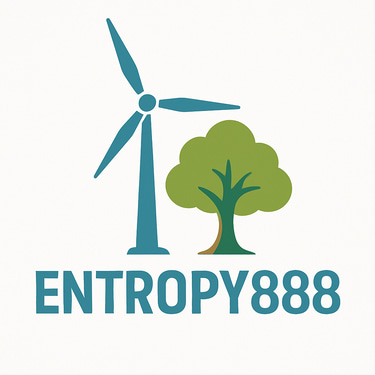How Bitcoin Mining Can Power the Green Industrial Revolution
The first Industrial Revolution was powered by coal. The second by oil. The third by silicon and data. Now, as the world enters the era of decarbonization, a Green Industrial Revolution is underway — and Bitcoin mining is quietly becoming one of its catalysts. Far from being an obstacle to sustainability, mining can drive investment, innovation, and resilience across the global energy and industrial landscape.
SUSTAINABLE BITCOIN MININGRENEWABLE ENERGY & BITCOIN MINING
Chris Boubalos
10/14/2025
The Industrial Shift: From Extraction to Regeneration
The old model of industrial growth was linear: extract resources → burn energy → create waste.
The new model is circular: use renewable power → store and reuse energy → regenerate ecosystems.
Bitcoin mining, when powered by renewables, fits perfectly within this new paradigm.
It monetizes surplus clean energy, stabilizes grids, and fuels technological advancement in AI, automation, and thermal reuse — all key pillars of the green transition.
1. Creating Demand for Renewable Infrastructure
Every renewable project faces one big question: who will buy the energy?
Bitcoin mining provides the answer.
By acting as a base demand anchor, mining helps renewable developers:
Secure financing faster.
Build capacity in remote regions.
Keep turbines and panels running efficiently.
As mining expands next to hydro, wind, and solar sites, it accelerates the construction of clean energy infrastructure that benefits entire economies.
2. Enabling Smart Industrial Ecosystems
The same principles that make mining profitable — automation, load flexibility, and waste heat management — also apply to other green industries.
Co-located mining hubs can provide:
Stable power use for industrial parks.
Recycled heat for agriculture or greenhouses.
Digital services (data processing, AI computing) powered by renewable energy.
This fusion of digital + industrial + renewable creates a new kind of smart manufacturing ecosystem.
3. Driving Innovation in Energy Technology
Bitcoin miners are among the world’s most demanding users of electricity.
To survive, they innovate relentlessly:
Developing ultra-efficient ASIC chips.
Pioneering immersion and hydro cooling.
Experimenting with hydrogen, geothermal, and battery integration.
These technologies don’t stay within mining — they spill over into broader industry, making energy use cleaner and smarter everywhere.
4. Building Economic Resilience
The Green Industrial Revolution needs industries that can adapt to volatility.
Bitcoin mining’s flexibility — to pause, relocate, or adjust to grid conditions — makes it the perfect industrial buffer in uncertain markets.
Countries that integrate mining into their energy mix gain:
Exportable digital value.
Enhanced grid stability.
New revenue channels from renewable development.
In short: energy independence meets digital sovereignty.
5. The Entropy888 Model: Green Power, Real Impact
Entropy888 develops containerized mining systems that:
Run entirely on renewable surplus energy.
Reuse waste heat for agriculture and local industries.
Reinvest profits into tree planting and ecological restoration.
Each operation becomes a node in a regenerative industrial network — producing both digital and natural wealth.
Conclusion
The Green Industrial Revolution isn’t just about electrification — it’s about reimagining how energy, technology, and economy interact.
Bitcoin mining stands at the center of this transformation: a bridge between the digital and physical worlds, between power generation and sustainable development.
By turning renewable energy into a productive industrial resource, Bitcoin mining can help power the next great leap forward — a cleaner, smarter, regenerative world.
Contact
© 2025. All rights reserved.
Christos Boubalos - Business Development Lead +306972 885885 mob/whatsapp
christos@entropy888.com
-------------------------------------------
General Enquiries - info@entropy888.com
